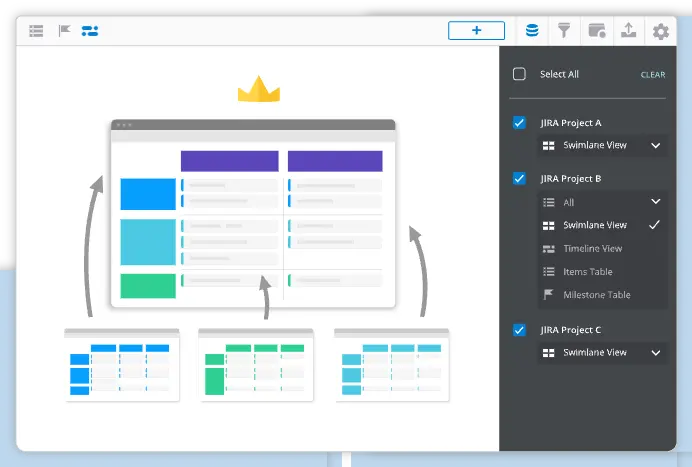Benefits of performance measurement and analytics
From HR to IT and sales, performance measurement and analytics impact every department and system within an organization. Regardless of role or discipline, everyone can benefit from the information they provide.
1. Increased productivity
Analyzing performance measures helps uncover systems or operations that aren't meeting company expectations. Once identified, leaders can review the data and develop a performance management strategy to enhance productivity and effectiveness.
2. Data supported decision-making
Making decisions without evidence and supporting data can lead to costly mistakes. Performance analysis allows company leadership to revisit past tactics and assess their effectiveness, helping determine whether to replicate those choices. If the data shows a previous decision didn’t yield the expected results, leaders can avoid repeating the mistake and select a better course of action.
3. Improved long-term planning
Performance analysis identifies cyclical trends and patterns. Management can use this data to forecast future developments and plan proactively.
How performance measurement and analytics are used in business environments
Performance measurement tools vary depending on the discipline and organizational goals. Here are some of the most widely used measures across industries.
Common performance measures
No matter the industry or discipline, you’ll likely find these performance measurements in use.
Benchmarks
Benchmarks provide a standard by which organizations gauge improvement. An internal benchmark compares performance within the organization, such as sales data across different stores. External benchmarks, sometimes called competitive benchmarks, compare a company’s productivity to its competitors.
KPIs
KPIs are more focused than general performance measures, offering a quantifiable assessment of performance over time against specific objectives. For example, a typical marketing KPI might track the number of sales leads generated by an email campaign.
Business performance measures
Organizations use business performance measures to monitor the operational efficiency of departments. This data helps determine which teams are meeting expectations and which may need additional support to reach their goals.
ROI indicators
Return on investment (ROI) measures whether an asset is expected to recover its costs and generate profit. For example, if a company is choosing between two customer service platforms, it might select the one with the highest projected ROI, such as a 40% return compared to another option offering 25%.
Profitability
Profitability is one of the most critical company performance measures, tracking profit margins against targets. This data informs decisions such as budget adjustments. For instance, if one department exceeds its profit margin target, the company may allocate additional resources to support its continued success.
Sales performance measures
Sales performance measures compare the efforts and outcomes of teams or individuals, helping companies evaluate the effectiveness of their strategies and determine whether adjustments are needed to meet targets.
Sales action
Lead generation
Service sales
Total revenue
Customer reach
Lead generation
Lead generation measures how effectively a sales channel converts visitors into leads. By comparing the number of visitors entering the sales funnel to the service quotes requested, sales teams can adjust strategies to improve engagement.
Sales productivity
Sales productivity measures how quickly a team or individual meets revenue targets. The faster the target is reached, the better the productivity. If a sales team falls short of its goals, leadership can provide additional resources or incentives to boost performance. Typical sales measures include:
Time spent on sales activities
Average number of sales tools used
Conversion rates
Project management performance measures
In project management, performance indicators track each phase of the project life cycle against the established schedule, budget, and objectives. This data helps project managers assess the initiative's profitability and effectiveness, guiding decisions to ensure successful project outcomes.
Scope of work
Scope metrics quantify tasks based on speed, cost, or , helping teams stay on track. If the project falls behind, the data can identify bottlenecks, allowing project managers to reallocate resources as needed.
Gross margin
Gross margin measures a project’s total cost against its projected income. A positive gross margin indicates that the company can reinvest funds into other areas. This metric is often used at the start of a project to evaluate its potential profitability.
Employee performance measures
HR departments use employee performance analytics to deliver data-driven performance reviews that maximize individual contributions and highlight areas for professional growth.
For example, if employees report increased stress during the holiday season, resulting in higher sick leave, HR might increase staffing to maintain productivity and reduce burnout.
Efficiency
Efficiency measures how well an employee maximizes output with minimal time and effort. These metrics track productivity by analyzing the quality and quantity of work performed.
Quantity
This measure tracks the volume of tasks completed, such as the number of units processed by production teams or revenue generated by sales teams.
Enhancing performance measurement and analytics with Tempo
Conducting performance measurement and analysis can be complex. Let Tempo handle the heavy lifting, allowing you to focus on delivering clear, informative reports to your stakeholders.
By combining two of Tempo's most powerful apps, and, you can create an effective performance management system.
Custom Charts offers flexible, customizable reporting that consolidates key team and project data into a single dashboard. It tracks multiple metrics, including time in status, cumulative spend, sprint progress, and more, for teams across departments from ITSM to HR.
Capacity Insights provides a clear visualization of how each team's time and efforts align with and project ROI, offering actionable insights without the administrative burden.
Together, Custom Charts and Capacity Insights equip your organization with the data needed to drive strategic decisions about its future.











